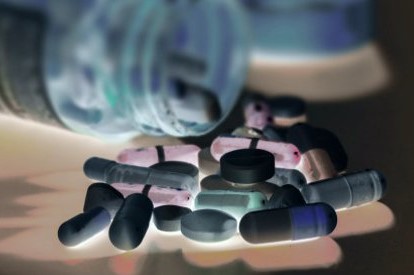
Antipsychotic drugs: an overview, indications for use
Antipsychotic drugs are subdivided into conventional antipsychotics and 2nd generation antipsychotics based on their affinity and receptor activity to the specific neurotransmitter
Second-generation antipsychotics offer some advantages both in terms of discreetly greater efficacy (although recent evidence casts doubt on the advantage of 2nd generation antipsychotics as a class) and in reducing the likelihood of developing an involuntary movement disorder and related adverse effects.
Recent findings suggest that new antipsychotic drugs with new actions (i.e. trace amines and muscarinic agonists) may become available.
Currently, second-generation antipsychotics comprise about 95 per cent of the antipsychotics prescribed in the United States
However, the risk of developing a metabolic syndrome (excess abdominal fat, insulin resistance, dyslipidaemia and hypertension) is greater with 2nd generation antipsychotics than with conventional ones.
Several antipsychotics in both classes may cause long QT syndrome and ultimately increase the risk of fatal arrhythmias; these drugs include thioridazine, haloperidol, olanzapine, risperidone and ziprasidone.
Conventional antipsychotics
Conventional antipsychotics act primarily by blocking dopamine D2 receptors (dopamine-2 blockers).
Conventional antipsychotics can be classified into high, intermediate or low potency.
High-potency antipsychotics possess higher affinity for dopaminergic receptors and lower affinity for alpha-adrenergic and muscarinic receptors.
Low-potency antipsychotics, which are rarely used, possess a lower affinity for dopaminergic receptors and a relatively higher affinity for alpha-adrenergic, muscarinic and histamine receptors.
The different drugs are available in tablet, oral solution and short- and long-acting IM formulations.
A specific drug is selected primarily on the basis of the following points:
- Adverse event profile
- Required route of administration
- Patient’s previous response to the drug
Conventional antipsychotics can cause significant side effects, particularly some related to ideation and extrapyramidal disorders (e.g. dystonia, tremor, tardive dyskinesia).
About 30% of patients with schizophrenia do not respond to conventional antipsychotics.
Some may respond to clozapine, a 2nd generation antipsychotic.
Second-generation antipsychotics
About 95% of all antipsychotic drugs prescribed in the United States are atypical antipsychotics.
The 2nd generation antipsychotics block dopamine receptors more selectively than conventional antipsychotics, decreasing the risk of extrapyramidal (motor) adverse effects.
Increased binding to serotonergic receptors may contribute to the antipsychotic effects on positive symptoms and the adverse effect profile of second-generation antipsychotics.
The 2nd generation antipsychotics also have the following effects:
- They tend to decrease positive symptoms
- They may decrease negative symptoms more markedly than conventional antipsychotics (although this difference has been questioned)
- They may result in less cognitive impairment
- Are less likely to cause extrapyramidal adverse effects
- They have a lower risk of causing tardive dyskinesia
- Increase prolactin slightly or not at all (except risperidone, which increases prolactin as much as conventional antipsychotics)
- Can generate a metabolic syndrome, with insulin resistance, weight gain and hypertension.
Atypical antipsychotic drugs appear to reduce negative symptoms because they are less likely to induce parkinsonian effects than conventional antipsychotics.
Clozapine is the only 2nd generation antipsychotic that has been shown to be effective in up to 50% of patients resistant to conventional antipsychotics.
Clozapine reduces adverse symptoms, reduces suicidality, has little or no motor adverse effects and has a minimal risk of causing tardive dyskinesia, but causes other adverse effects, including sedation, hypotension, tachycardia, weight gain, type 2 diabetes and increased salivation.
It can also cause convulsions, with a dose-dependent mechanism.
The most serious adverse effect is agranulocytosis, which may occur in about 1 % of patients.
Consequently, frequent white blood cell monitoring is necessary (performed weekly for the first 6 months and every 2 weeks thereafter, then once a month after a year), and clozapine is generally reserved for patients who have responded poorly to other drugs.
Newer antipsychotics offer many of the benefits of clozapine without the risk of agranulocytosis and are generally preferable to conventional antipsychotics for the treatment of an acute episode and for relapse prevention.
However, in a large-scale, long-term, controlled clinical trial, symptomatic improvement with the use of any of the four 2nd generation antipsychotics (olanzapine, risperidone, quetiapine, ziprasidone) was not a better outcome than treatment with perphenazine, a conventional antipsychotic with anticholinergic effects.
In a follow-up study, patients who dropped out of the study prematurely were randomly treated with one of the other three 2nd generation antipsychotics under review or with clozapine; this study showed a clear advantage of clozapine over the other 2nd generation antipsychotics under review.
Thus, clozapine appears to be the only effective treatment for patients who have failed treatment with a conventional antipsychotic or a 2nd generation antipsychotic.
However, clozapine is underused, probably due to low tolerability and the need for continuous monitoring of blood values.
Lumateperone is the newest 2nd generation antipsychotic for the treatment of schizophrenia in adults.
It improves psychosocial function with fewer metabolic and motor side effects.
It should not be used in older patients with dementia-related psychosis, in whom it leads to an increased risk of death.
Other undesirable effects include sedation and xerostomia.
The new 2nd generation antipsychotics are very similar in efficacy but differ in adverse effects, so the choice of drug is based on individual response and other pharmacological characteristics.
For example, olanzapine, which has a relatively high rate of sedation, may be prescribed for patients with significant agitation or insomnia; less sedating drugs may be preferable for lethargic patients.
A trial period of four to eight weeks is usually necessary to assess the total efficacy and adverse effect profile.
After acute symptoms have stabilised, maintenance treatment begins; therefore, the lowest dose used is the one that avoids symptomatic relapses.
Aripiprazole, olanzapine and risperidone are available in long-acting injectable formulations.
Weight gain, hyperlipidaemia and a high risk of type 2 diabetes are the most important adverse effects of 2nd generation antipsychotics.
Thus, before starting treatment with 2nd generation antipsychotics, all patients should be selected according to risk factors, considering personal or family history of diabetic disease, weight, waist circumference, blood pressure, fasting plasma glucose (FPG) and lipid profile.
Those at significant risk of metabolic syndrome may be better treated with ziprasidone and aripiprazole than with other 2nd generation antipsychotics.
Education should be provided to the patient and family regarding symptoms and signs of diabetes (particularly polyuria, polydipsia and weight loss) and diabetic ketoacidosis (nausea, vomiting, dehydration, rapid breathing, loss of consciousness).
In addition, all patients starting a 2nd generation antipsychotic should be offered counselling on diet and physical activity.
All patients taking a 2nd generation antipsychotic require periodic monitoring of weight, body mass index, fasting plasma glycaemia (FPG) and specialist counselling in case of development of hyperlipidaemia or type 2 diabetes.
Sometimes, the combination of an antipsychotic with another drug is useful.
These drugs include
- Antidepressants/selective serotonin-noradrenaline reuptake inhibitors
- Another antipsychotic
- Lithium
- Benzodiazepines
New experimental drugs that antagonise the dopamine receptor are in development including ABT-925, BL1020, ITI 007, JNJ-37822681 and others.
Long-acting antipsychotic drugs
Some conventional and second-generation antipsychotics are available in sustained-release formulations.
Such formulations are useful in eliminating drug non-adherence.
They may also be useful for patients who, due to disorganisation, indifference or denial of the disease, cannot reliably take the oral daily dose.
Adverse effects of antipsychotic drugs
Conventional antipsychotics cause various side effects, such as sedation, cognitive flattening, dystonia and muscle rigidity, tremors, elevated prolactin levels (causing galactorrhoea), weight gain, lowered seizure threshold in patients with convulsions or at risk of convulsions.
Akathisia (psychomotor agitation) is particularly unpleasant and may lead to non-adherence to treatment; it can be treated with propranolol.
Second-generation antipsychotics are less likely to cause extrapyramidal (motor) adverse effects or tardive dyskinesia, but these can occur.
Metabolic syndrome (excess abdominal fat, insulin resistance, dyslipidaemia and hypertension) is a significant adverse effect with many 2nd generation antipsychotics.
Tardive dyskinesia is an involuntary movement disorder characterised mostly by contraction of the lips and tongue, spasms of the arms or legs, or both.
For patients taking conventional antipsychotics, the incidence of tardive dyskinesia is about 5% per year of drug exposure.
In about 2% of patients, tardive dyskinesia is severely disfiguring.
Tardive dyskinesia is less common with second-generation antipsychotics.
In some patients, tardive dyskinesia persists indefinitely, even after discontinuation of the drug.
Because of this risk, patients receiving long-term maintenance therapy should be evaluated at least every 6 months.
Assessment instruments such as the Abnormal Involuntary Movement Scale (AIMS) can be used to more accurately record changes over time.
Patients with schizophrenia who continue to require an antipsychotic may be treated with clozapine or quetiapine, which are atypical antipsychotic drugs.
Valbenazine, a vesicular monoamine transporter-2 inhibitor, has recently been approved for the treatment of tardive dyskinesia.
The initial dose is 40 mg 1 time/day and, in the absence of hepatic dysfunction, is increased to 80 mg 1 time/day after 1 week.
The most significant adverse effects are hypersensitivity, drowsiness, QT interval prolongation and parkinsonism.
Neuroleptic malignant syndrome, a rare but potentially fatal adverse effect, is characterised by rigidity, fever, autonomic nervous system instability and elevation of creatine kinase (CK) levels.
References on antipsychotic drugs
Correll CU, Rubio JM, Inczedy-Farkas G, et al: Efficacy of 42 pharmacologic cotreatment strategies added to antipsychotic monotherapy in schizophrenia: Systematic overview and quality appraisal of the meta-analytic evidence. JAMA Psychiatry 74 (7):675-684, 2017. doi: 10.1001/jamapsychiatry.2017.0624.
Wang SM, Han C, Lee SJ: Investigational dopamine antagonists for the treatment of schizophrenia. Expert Opin Investig Drugs 26(6):687-698, 2017. doi: 10.1080/13543784.2017.1323870.
Read Also:
Emergency Live Even More…Live: Download The New Free App Of Your Newspaper For IOS And Android
What You Need To Know About Substance Use Disorder
Schizophrenia: Risks, Genetic Factors, Diagnosis And Treatment
Obsessive-Compulsive Personality Disorder: Psychotherapy, Medication
Seasonal Depression Can Happen In Spring: Here’s Why And How To Cope
Intranasal Ketamine For The Treatment Of Patients With Acute Pain In ED
Delirium And Dementia: What Are The Differences?
The Use Of Ketamine In Pre-Hospital Setting – VIDEO
Anxiety: A Feeling Of Nervousness, Worry Or Restlessness
What Is OCD (Obsessive Compulsive Disorder)?
Ketamine May Be Emergency Deterrent For People At Risk Of Suicide
Everything You Need To Know About Bipolar Disorder
Drugs To Treat Bipolar Disorder
What Triggers Bipolar Disorder? What Are The Causes And What Are The Symptoms?



